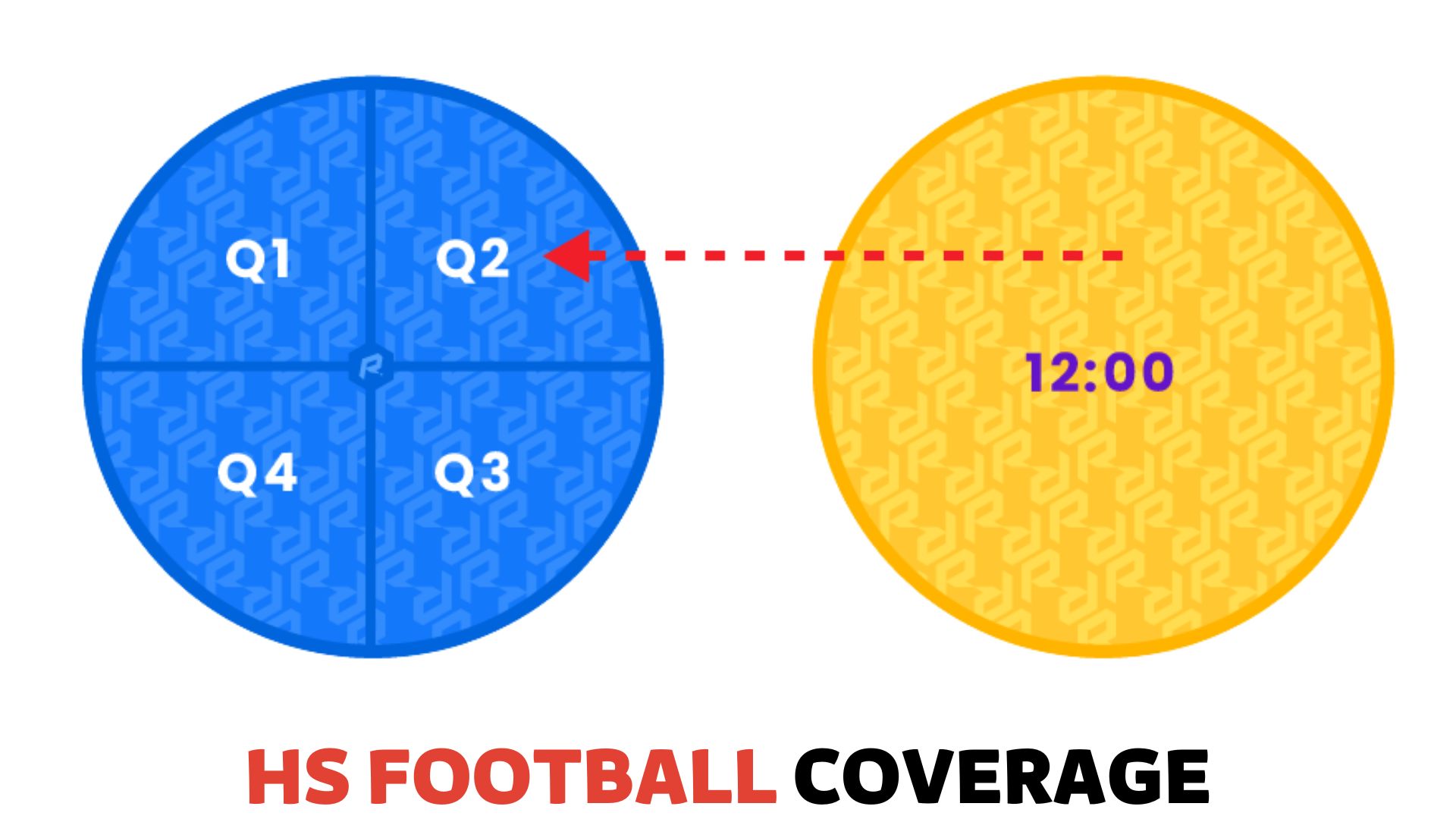
American Football jerseys are more than just a uniform. They’re rich with symbolism and history. A key component is the player’s jersey number, an identifier with far-reaching implications and stories.
From the birth of numbering to its modern-day significance in NFL rules, fan culture, and personal narratives, jersey numbers offer a captivating viewing of the sport. Let’s explore these stories and understand the importance of jersey numbers in American Football.
History of Jersey Numbers in American Football
The tradition of assigning numbers to jerseys in American football started in the early 1900s. Early teams sometimes assign numbers to their players, but there was no standard system.
In the 1920s, some teams began to assign numbers based on position, with the quarterback wearing #1, the running back wearing #2, and so on.
In 1949, the All-America Football Conference (AAFC) merged with the National Football League (NFL). The AAFC had a different numbering system than the NFL, which confused me.
To address this, the NFL adopted a standardized numbering system in 1952. This system was updated and made more rigid in 1973 and has been modified slightly since then.
The key idea was to help identify players on the field for referees and spectators. But in a century, it evolved beyond mere identification to a symbol of prestige and honor.
Football legends like Johnny Unitas (#19) and Joe Montana (#16) imprinted these numbers in the hearts of fans, providing an emotional connection between a number and the player’s achievements and character.
In many cases, a jersey number has become so strongly associated with the player that it’s hard to imagine anyone else donning it.
Interestingly, the jersey number wasn’t always linked with a player’s position on the field. It was in 1973 that the NFL adopted specific numeric ranges for each position, a system that remains largely in place today, albeit with updates in 2023.
For instance, wide receivers were originally only allowed to choose between 80 and 89, but it expanded to 10 to 19 in 2004, acknowledging the broader reach and impact of players in that position.
However, there’s also a sense of individuality and freedom since some players choose their numbers for personal reasons. Take Peyton Manning’s #18, for example.
He wore that number to honor his older brother, Cooper, whose football career was cut short due to spinal stenosis.
What’s clear is that a jersey number goes beyond identification; it’s a badge telling stories of a player’s journey, their commitment, and their role in the rich tapestry of American Football.
A QR code generator is a tool or software that enables users to create Quick Response (QR) codes, two-dimensional barcodes that can store various information.
These codes can be scanned using a smartphone or QR code reader to quickly access the encoded data, such as website URLs, contact information, or product details.
QR code generators are widely used for marketing, advertising, and information dissemination, providing a convenient and efficient way to share digital content.
Users typically input the desired information into the generator, producing a unique QR code that others can easily distribute and scan. QR code generators have become integral to modern business and communication strategies due to their versatility and ease of use.
Rules and Regulations about Jersey Numbers
To organize the sport and ensure a standard line of action, the NFL has certain rules regulating jersey numbers. The player’s position on the field primarily defines the assignment of jersey numbers.
This numbering system adopted in 1973, with minor changes in 2004, 2021, and 2023, was chiefly developed to help officials quickly identify players by their field positions.
For instance, quarterbacks were assigned numbers 1–19, running backs and defensive backs between 20–49, while numbers above 50 were typically reserved for players in the offensive line and other defense positions.
However, these rules saw a significant change in April 2021. The NFL expanded the jersey number rule to allow more flexibility, giving players greater freedom to choose their preferred numbers.
The new policy offers linebackers the choice of 1–59 and 90–99 and widened the available selection for running backs, tight ends, fullbacks, and wide receivers to 1–49 and 80–89.
Defensive backs are now allowed to pick between 1 and 49, and offensive linemen can choose between 50 and 79.
In 2023, the NFL Competition Committee gave its approval, backed by franchise owners’ support, to a proposal made by the Philadelphia Eagles. The proposal enables a more liberal approach to jersey numbers, further expanding the range to include zero.
Simultaneously, some exceptions make the rules more intriguing. Some players, like Australian punter Mitch Wishnowsky, who wore #6 (typically reserved for quarterbacks), got their unusual numbers before the recent rules changes.
It’s also essential to understand that when a player establishes an on-field reputation with a number, it often stays with them throughout their career.
This player-number association has become so strong that clubs often retire outstanding jersey numbers as an honor, indicating that no other player may use that number.
Symbolic Significance of Jersey Numbers
Going beyond simple identification and compliance with the NFL’s rules, jersey numbers in American football often carry underlying symbolism deeply ingrained in the sport.
For many players, the choice of a jersey number is tied to their narratives. It may be a tribute to a loved one, a nod to an inspirational figure, or a continuation of a tradition from their college football days.
For example, former Dallas Cowboys quarterback Troy Aikman stuck with his college football number #8 throughout his professional career to acknowledge those formative years.
On a larger scale, some numbers carry legacies that cannot be reproduced. When a player achieves extraordinary success under a particular number, the club often retires the jersey for future use to honor its accomplishments.
An example is #12, revered across the NFL due to the illustrious careers of quarterbacks Joe Namath, Terry Bradshaw, and Tom Brady.
In the same vein, championship or iconic moments also contribute to the significance of a number. The instant recognition of Joe Montana’s #16, Aaron Rodgers’s #12, or Emmitt Smith’s #22 symbolizes memorable moments the players brought to life.
When an illustrious jersey number is retired, it also signifies the end of an era and the unparalleled contributions of that player. No other Chicago Bears player, for example, will wear #34, as it belongs to the legendary running back Walter Payton, a tribute to his excellence on the field.
Jersey Numbers and Fans
Fan culture is integral to American football; jersey numbers contribute significantly to fan experiences and traditions.
Fans often purchase or customize American football jerseys with the numbers of their favorite players, showing their profound support and respect. This act helps them feel a sense of belonging and camaraderie with the team and other fans.
NFL jersey sales figures provide an interesting insight into the season’s most popular and beloved players. It’s not surprising to see big names like Tom Brady’s #12 or Patrick Mahomes’ #15 consistently in the top-selling jerseys each year.
In certain instances, jersey numbers become synonymous with unforgettable moments and performances, resonating with fans long after the game.
Whenever Packers fans see or wear #4, they tend to reminisce about Brett Favre’s remarkable performances. Similarly, Steelers fans associate #86 with the memorable plays of Hines Ward.
Some fans take their commitment to a jersey number to the next level. Take the famous “Dawg Pound” of the Cleveland Browns, where fans often wear #32 as a tribute to the legendary Jim Brown, despite the player retiring over five decades ago.
Then there’s the unique tradition of retiring jersey numbers. Many fans are emotionally invested in these moments as they’re not just about the player but also about the collective memory of the team and the fans.
When the Giants retired Lawrence Taylor’s #56, it was an honor to Taylor’s legacy and an homage to the many fans who had cheered him on throughout his career.
The Enduring Impact of Numbers in American Football
From a mere form of player identification to carrying the weight of personal stories and cultural significance, jersey numbers play a fascinating role in American Football. The importance of a player’s number cannot be underestimated.
Instead, it encapsulates the sport’s rich tradition and history, the players’ identity, and the fans’ collective emotions.
As the renowned quarterbacks, running backs, wide receivers, and other positions take their place on the field with their chosen numbers, know there is a narrative behind each number.
Whether it’s a nod to an influential player, a personal tribute, a mark of distinguished feats, or a simple alignment with NFL rules, these numbers hold a multifaceted significance.
Remember to glimpse the jerseys the next time you watch an NFL game. Beyond just the teams’ colors, the numbers they bear tell absorbing stories—stories of players, fans, and the thrilling sport we love, American Football.
So let the stories behind the numbers give you another reason to follow every pass, every tackle, every touchdown, the elements that make football breathtaking.
The stories behind the numbers can only enhance your understanding and appreciation of this marvelous sport.















